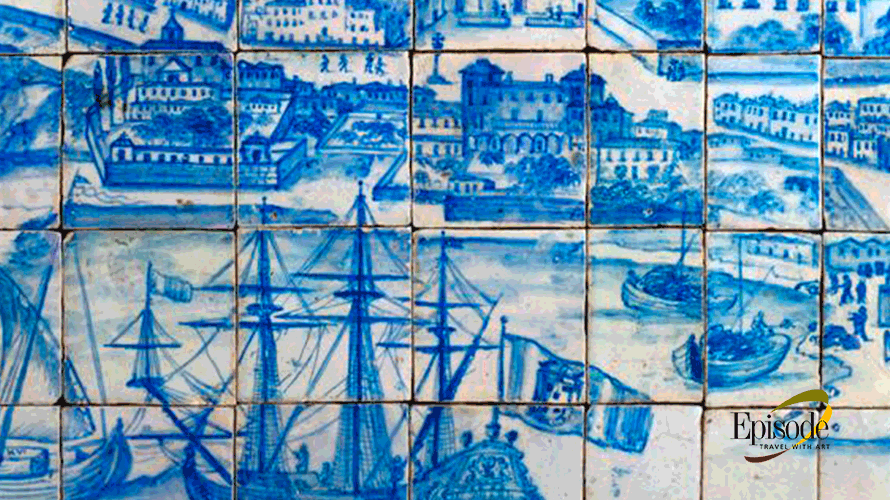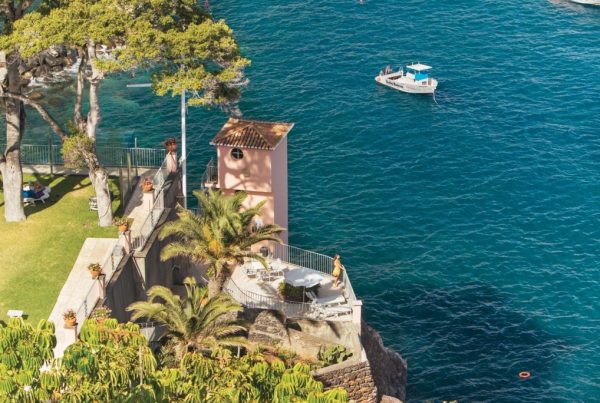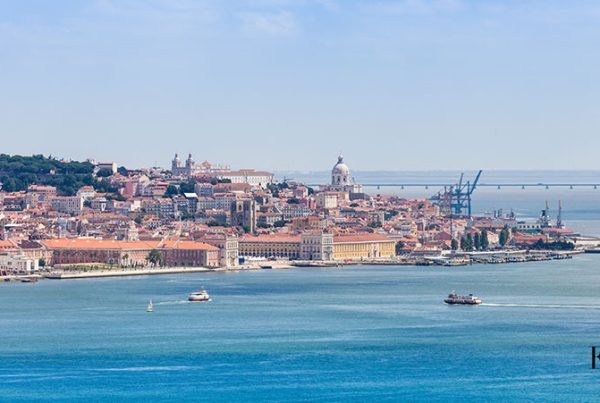Azulejo: Portugal in a glazed tile
If there is one element that epitomizes the singularity of Portuguese decorative arts, it is the azulejo (glazed tiles). More than just an aesthetical element, azulejos are indeed a symbol of Portuguese culture. Introduced in Portugal by King D. Manuel I in 1498, after a visit to Spain where he was mesmerized by the beauty of Moorish tiles, the azulejo in Portugal has since developed its own distinctiveness, spanning more than five centuries of history to emerge, renewed, through the hands of modern and contemporary artists. Composing geometric patterns or figurative scenes, these magical colored tiles became profusely used in Portuguese architecture to decorate walls, ceilings and floors. From North to South of Portugal, in palaces, churches and gardens, azulejos lend their luminous beauty to façades and interiors, garden benches, fountains and balconies in an enchanting journey that you too will be able to discover.
Museu do Azulejo: A close look to Portugal’s acclaimed tiles
Set within the Convento de Madre de Deus, in the oriental part of Lisbon, the Museu do Azulejo is a sanctuary of glazed tiles, and the home to some of Portugal’s finest artistic treasures. The museum started its activity in the 1960’s, as part of the program of the National Museum of Ancient Art and became autonomous in 1980. A visit to this superb building and its collection, where, among other jewels, you will be able to admire a fantastic panel of the city of Lisbon before the 1755 earthquake, is a brilliant introduction to the world of azulejos. But you can get even closer to the secrets of the art of azulejo with a visit to the last big factory of tiles and pottery craft in Europe, dating back to the 18th century. A hands-on experience awaits you, as you discover the secrets and techniques of azulejo in a tile-painting workshop. Bring home a piece of memory in a fantastic azulejo made by you!
Palácio Fronteira: an unmatchable collection of Portuguese Azulejos
Built in 1675 by the first Marquis of Fronteira, the Palácio Fronteira, in Lisbon, hides one of Portugal’s most stunning and rare collections of azulejos. It is an absolute must see for those who want to delight in the beauty of azulejos, used both in the gardens, to depict mythological scenes, and the Palace’s interiors. The Sala das Batalhas (Room of Battles) is perhaps the palace’s most emblematic room. The walls are covered by 8 panels of azulejos, describing the battles for the Restoration of Independence, where the first marquis himself took part. Almost like a “documentary” of the battles, these cobalt blue azulejos, full of details and lively elements, were especially commissioned by the Marquis and are inspired by direct witnesses of the scenes.
Azulejo in Portugal: The art of glazed tiles in Porto
If Lisbon and the south present extraordinary examples of the art of Azulejo in Portugal (a visit to Palácio da Bacalhôa, in Azeitão, is highly recommended for a feel of Renaissance inspiration in superb glazed tiles) the North is also very rich in this chapter. In Porto, the Igreja de Nossa Senhora do Carmo, a beautiful Rococo church built in the second half of the 18th century, offers an extraordinary panel of azulejos, which can be admired from the outside, as they cover the south façade of the church. Designed by Silvestre Silvestri, this composition pictures the foundation of the Carmelites religious order and was added to the church in 1912. Also in Porto, the Capela das Almas (or Capela de Santa Catarina) is another captivating example of the attractiveness of Portuguese azulejos. Located at the corner of the Rua de Santa Catarina, this 18th century church seems to be wrapped up in a skin of azulejos, as almost 16.000 tiles cover its exterior walls. These beautiful white and blue glazed tiles representing the lives of Saint Francis of Assisi and Sainte Catherine were created by Eduardo Leite and produced by the famous Fábrica de Azulejos Viúva Lamego in 1929.





